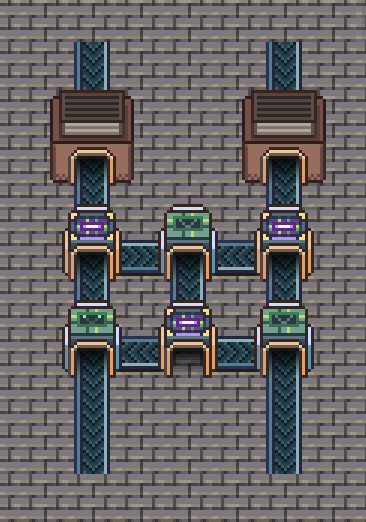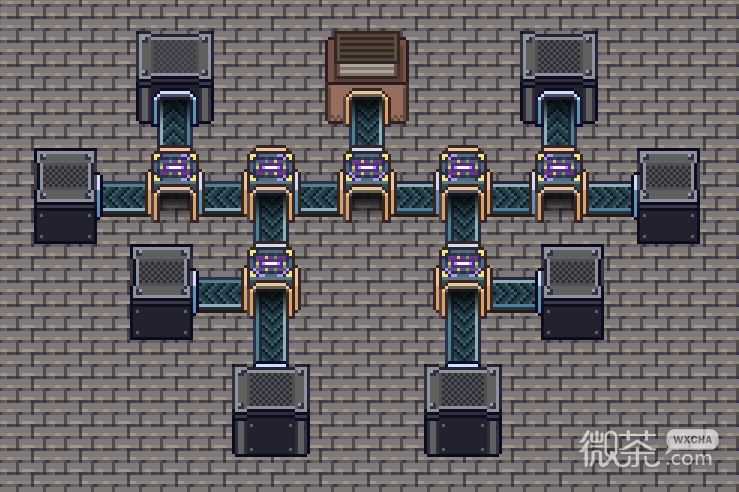Many netizens are playing the game "Jiangcheng Pioneer", and many problems have arisen while playing. For example, the current version of "Jiangcheng Pioneer" does not understand the logistics bus idea overview, so where is the analysis of this content? ? You might as well take a look at the guide content brought by the editor below, I hope it will be helpful to everyone.
Completely isolate all single categories of production. Those who produce iron blocks will concentrate on producing iron blocks, and the output will be uniformly sent to the logistics center for distribution. Producers do not need to worry about how to distribute the production after production, and will not adjust the iron blocks due to future demand changes. For a block production line, you can use 50% of the iron blocks to produce iron plates today, change it to 20% tomorrow, and change it to 80% the day after tomorrow. It only requires a small adjustment to complete.
You need to at least unlock it
1. Level 4 conveyor belt
2. Cross-region collection/delivery station
I’ll consider doing this later.
The biggest limitation is the conveyor belt speed, because this game can only rely on conveyor belts to transport items, and the maximum speed is only 8/s, which is far from enough for some basic materials.
Secondly, items can only be diverted by a diverter, without a sorting device. The main problem with the diverter is that it divides the items equally, so certain means are required to meet the output of any proportion.
I dedicated a piece of land as a logistics center. This place only does two things:
1. Receive materials produced by upstream and cache them
2. Allocate to downstream in proportion (this ratio is actually determined by the productivity of downstream)
For example, there are 4 iron block production lines upstream. All are input to the logistics center first, and then exported to the iron plate and iron bar production lines respectively after being summarized.
Due to the speed limit of the conveyor belt, we cannot simply use a "merger" to combine all upstream inputs. Some special structures are needed to expand the speed of the conveyor belt.
A 2-in, 2-out box can easily allocate 2 inputs into any proportion of output. However, this game does not have a 2-in, 2-out box. However, we can manually build one, which can achieve the same effect. The disadvantage is that it takes up more space.
Like this

The only thing you need to pay attention to is that you have to ensure that the total input >= the total output. For example, 2 inputs are 5/s + 5/s, which can be split into 7/s+3/s or 7/s+2/s. . But it cannot be split into 7/s+4/s. Although it can run like this, the ratio is wrong, and the 7/s side cannot meet expectations.
Through this method, we can extend the original speed limit of 8/s to 16/s, and allocate it in any proportion (each outlet can be further split according to demand, as long as the total output speed of a single outlet does not exceed 8/s Just fine).
Of course, 16/s is not enough, especially for some large-volume manufacturers such as screws and copper wires.
So we need to further expand
For example, 3 in and 3 out

In the same way, it is necessary to ensure that the total input >= the total output. The single output port can also be further subdivided, thus further increasing the bus speed to 24/s.
So can an N-in-N-out structure be realized?
Of course it's possible
Just follow these steps
1. Distribute each input equally into N parts
2. Take a copy of each input and merge it into one output
It's that simple. Of course, based on the actual situation of the splitter, this N cannot take any value, such as 5. However, this is not a problem because it can be excessive. That is, even if you need 5 in and 5 out, the design is 6 in and 6. No problem at all.
When the number of N becomes larger, it becomes impossible to arrange it as compactly as the two pictures above. For example, the following is one of the inputs with 8 in and 8 out.

Make 8 such structures, and then summarize 8 outputs respectively. This completes the 8-in and 8-out structure, and the bus speed is increased to 64/s.
To build a bus with several inputs and outputs for a product requires rough calculations.
Because there are so many of them, it takes up a lot of space and consumes electricity, so we try to save as much as possible.
Even if it is not enough in the future, it will not be troublesome to modify it, because the upstream and downstream do not need to be modified. At most, it will be a new addition. All that needs to be modified is the input/output structure.
For example, copper wire
Mainly used to produce armatures
first step:
First calculate the armature copper wire requirement is 25/12.8 seconds (calculated based on Tiangong BUFF)
That is 1.953125 pieces/second
Then calculate how many armatures a conveyor belt can carry
That is 8 / 1.953125 = 4.096, there is no problem with 4 units
Then consider your own production scale
For example, come 8 units first
Then the structure of 2 in and 2 out can be satisfied.
Step two:
Then calculate the production speed of copper wire, because a single input can be up to 8/s, but not all production machines can perfectly produce a speed of 8/s. For example, the output speed of copper wire is 3/4.8 seconds, which must reach 8 The output speed of /s requires 12.8 machines. In fact, it can only take 12 machines, which means that your single input can only reach a maximum of 7.5/s.
Then if you calculate 7.5/1.953125=3.84 based on 7.5, you cannot run at full speed.
There are many choices here
1. Either you use 13 copper wires as one group, which can ensure that the speed of each input port is 8
2. Or you can add an extra set of inputs to create a 3-in/3-out structure. The third port can only be used for the production of 2 copper wires.
I personally adopted the solution of 13 units in a group. Isn’t it just a waste of electricity? It’s affordable.
Generally speaking, it is impossible to implement a perfect and trouble-free bus structure under the current version. No matter how it is done, the speed of a single conveyor belt is only 8/s, so how many units and ports are required need to be calculated. , and cannot be expanded without thinking.
However, the above method can solve a transformation problem without having to tear down the whole house and rebuild it at every turn. After all, all production is carried out independently. All that needs to be deployed is the logistics center or each production workshop to increase production independently.